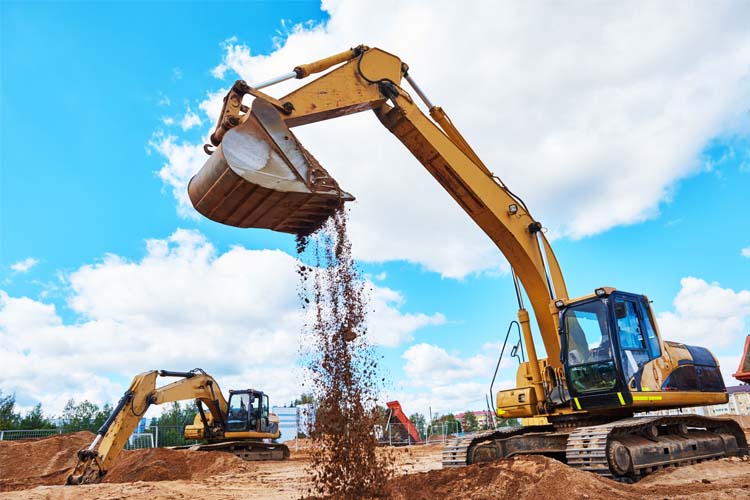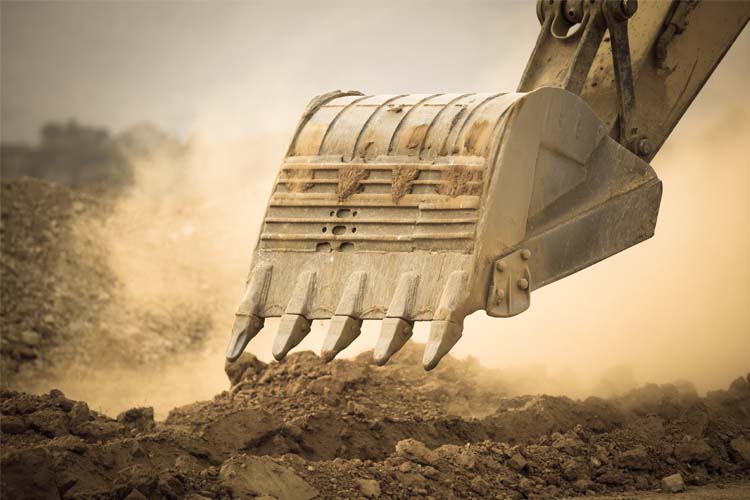An excavator is a powerful and necessary piece of equipment for everything from demolition and debris removal to earthmoving and excavation. However, excavators can only do these tasks with a bucket.
The bucket is a toothed digging attachment that allows the operator to excavate, move and load materials. There are many types of buckets, each designed to meet the requirements of a specific application, and these buckets come in a wide range of sizes.
.
Choosing the right bucket size helps improve efficiency, safety and productivity at the worksite and minimizes wear and tear on your equipment. On the other hand, the wrong bucket size can stress your excavator, increase cycle times and even cause tipping.
In this guide, we explain how to determine the correct bucket sizes for excavators by considering certain factors and consulting an excavator bucket size chart.
Factors to Consider When Choosing a Bucket Size
Excavator bucket sizes are measured by how wide they are inside. Mini-excavator bucket sizes may have a width as short as 12 inches, while buckets for large excavators can measure over 10 feet wide. The width of the bucket decides how wide of a trench you can dig and how much the bucket can hold.
Generally, the size of your excavator dictates the size of the bucket. However, many other factors come into play when determining the right size bucket for your project. These include the following:
The Type of Material to Be Excavated
The density of the material you’ll be excavating plays a significant role in bucket selection. Denser materials, such as rock, clay or compacted soil, can weigh large buckets down.
A better option would be smaller buckets, as these maintain optimal cycle times without overloading the excavator. Additionally, using smaller buckets for denser and heavier materials helps reduce fuel consumption.
Meanwhile, large buckets are better suited for moving and loading lighter, softer materials like loose dirt and sand.
Consider the Size of the Hauler Truck
The size of the bucket should be matched with the capacity of the hauler. This allows the operator to load it as quickly as possible.
A bucket that’s too small for the job requires more passes, wasting time and fuel. However, too big of a bucket is also not a good thing. Loading a large amount of materials at once can place added stress on the hauler, resulting in premature wear and tear that could lead to major problems requiring expensive repairs.
Job Site Conditions
Another factor to consider is the environment in which the bucket is to be used. If you’re operating in a narrow space, utilizing a smaller bucket that allows the operator to maneuver it safely is essential. For instance, if you’re working on a utility project in a residential area, you’ll likely only be able to use a mini-excavator and an appropriately sized bucket.
Other key factors include:
- Soil Stability: If you’re working on soft or unstable ground, a smaller bucket may be necessary to minimize the risk of the excavator sinking or getting stuck. Using a larger, heavier bucket could cause the excavator to become unstable and even tip over.
When working on soft or moist ground, a smaller bucket is often preferred to prevent the excavator from getting stuck or sinking. A larger bucket in such conditions could increase the risk of tipping or bogging down. - Obstructions: In areas with obstructions, such as tree branches, buried pipes and debris, a smaller bucket may be necessary to navigate the work site without causing damage to either the surroundings or the equipment, as well as to help ensure precision in digging.
Additionally, the type of ground in the worksite impacts the size of the excavator you can use and, by extension, the size of the bucket.
Type of Application
As mentioned, choosing the biggest excavator bucket that your excavator can safely handle is generally good practice. However, it’s also essential to consider the applications it will be used for. For example, if you need to dig a 30-inch trench, an 18-inch bucket won’t do.
Using the Excavator Bucket Size Chart
The manufacturer of your excavator has likely provided you with a helpful chart that details the appropriate size of buckets to use with your machine. An excavator bucket size chart helps simplify the process of choosing the right size bucket for your excavator. It’s also essential to consider the factors mentioned earlier before deciding to purchase or rent.
If you do not have a copy of your excavator’s bucket size chart, you can refer to the following:
| Excavator Size in Tons | Bucket Width | Grading Bucket |
| Up to .75-ton machine | 6 to 24 inches | |
| 1 to 1.9-ton machine | 6 to 24 inches | |
| 2 to 3.5-ton machine | 9 to 30 inches | |
| 4- to 6-ton machine | 12 to 36 inches | 60 inches |
| 7-ton to 8-ton machine | 12 to 36 inches | 60 to 72 inches |
| 10-ton to 15-ton machine | 18 to 48 inches | 72 inches |
| 19-ton to 25-ton machine | 18 to 60 inches | 84 inches |
Understanding Excavator Bucket Capacity
 When you’re cooking or baking, recipes sometimes call for heaping or level tablespoons of an ingredient. Similarly, bucket capacity can be described as heaped or actual.
When you’re cooking or baking, recipes sometimes call for heaping or level tablespoons of an ingredient. Similarly, bucket capacity can be described as heaped or actual.
Heaped capacity refers to the volume of material in a bucket when it has been filled to the point where it mounds at the top. Meanwhile, actual capacity refers to the bucket’s volume when the materials are leveled and struck off at the top.
Actual capacity is more accurate, while heaped capacity is typically 1.3 times more than actual capacity. While using the actual capacity in planning an excavation project is generally recommended, referring to the heaped capacity makes sense when you need to load a lot of material very quickly. However, when using heaped capacity, it’s crucial to factor in the increased cycle time and evaluate the risk of overloading the excavator.
The capacity of an excavator bucket, or how much it can carry, depends not just on its size but also on the following factors:
- Weight and density of materials
- Fill factor
- Cycle time
- Hourly production requirement
There are calculators online that help with determining bucket capacity. A better alternative is to contact an expert to assist you in calculating bucket capacity and choosing the right bucket size for your excavator.
Why It’s Important to Calculate the Capacity of the Bucket
Calculating the capacity of excavator buckets is vital for operational efficiency. This is because bucket capacity dictates how much material can be moved per cycle. Knowing the capacity of excavator buckets allows you to choose the right one for the job, optimizing workflow, increasing productivity and reducing cycle times.
Additionally, accurately determining bucket capacity helps prevent overloading of the excavator. Overloading can lead to wear and tear on its hydraulic system and components. On the other hand, choosing a bucket with a suitable capacity helps your excavator last longer and reduces repair costs.
Another reason is to ensure that the excavator is operating within its load limits. A bucket that is filled beyond capacity can cause safety hazards, such as the excavator tipping over.
Rent High-Performance Earthmoving Equipment for Your Project
National Dispatching is the one-stop shop for all your construction equipment needs. Whether you need a zero-swing excavator, a backhoe or a motor grader, you can rely on us.
We offer rentals of excavators with all the attachments you need for the job. Additionally, we provide value-added services like trucking and subcontracting to help ensure the efficiency of your project and the quality of its outcome.
Contact us today to learn more.

